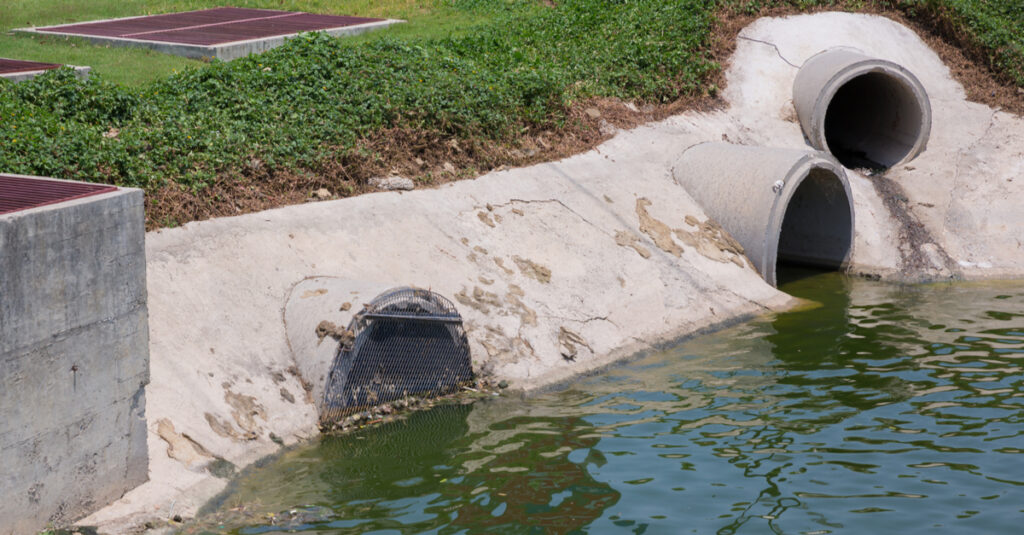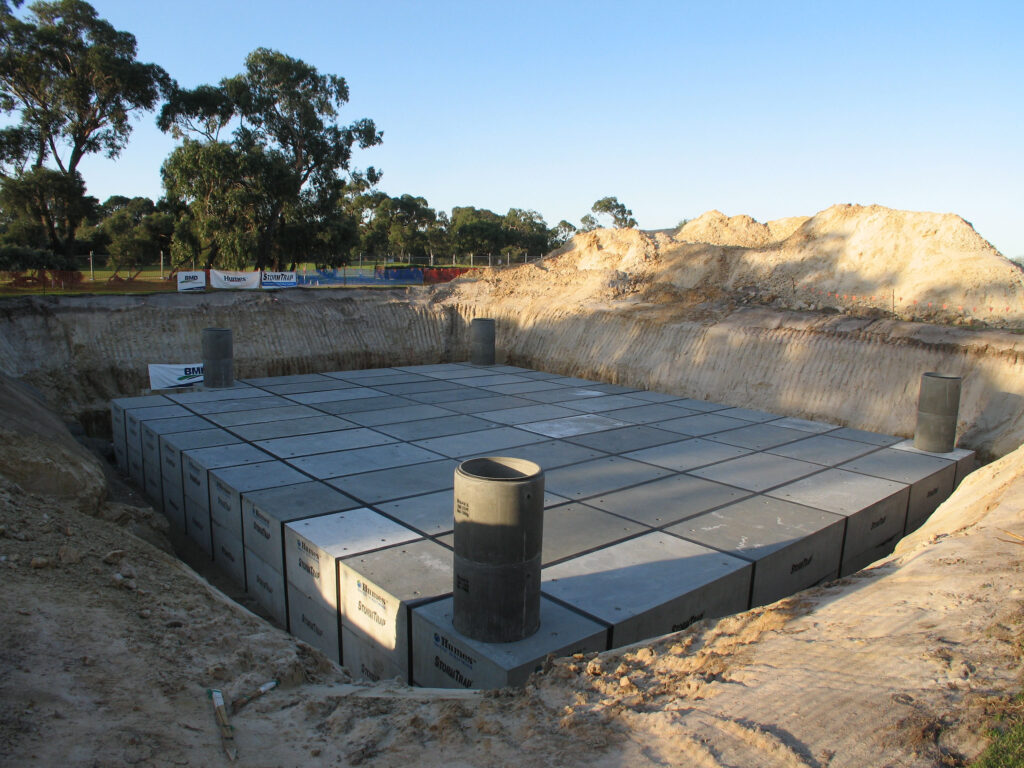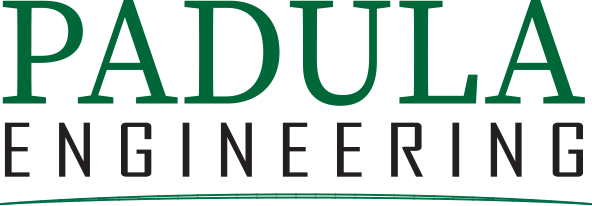Stormwater management is an essential part of any land development or construction project. In a place like Radnor, where urban growth is rapidly increasing and weather patterns are becoming more unpredictable, the need for effective stormwater management solutions is increasing.
Land developers in Radnor need stormwater management solutions they can rely on, there is only one engineering firm that they trust.
Padula Engineering offers innovative and effective stormwater management solutions to commercial, industrial, and institutional clients all over Radnor and surrounding areas.
In this article, we will explore what stormwater management is, the key components of stormwater management, and why Padula Engineering is the best choice for your stormwater management needs in Radnor.
Understanding Stormwater Management

Stormwater management refers to the control and treatment of rainwater runoff. It is essential for preventing flooding, erosion, and water pollution. In land development, effective stormwater management is crucial to maintain the integrity of the land and the safety of the structures built on it. It also ensures that developments comply with local regulations and standards.
Key Aspects of Effective Stormwater Management
A well-executed stormwater management plan involves several key components, each contributing to the overall success of a land development project.
Site Assessment and Surveying
The foundation of effective stormwater management lies in a thorough site assessment. This process involves in-depth evaluations of the land’s topography, soil composition, and existing drainage patterns. Advanced surveying techniques create precise maps of the area. This detailed information guides the planning process, enabling the development of tailored stormwater solutions.
Key surveying services include:
1. Topographic surveys to map land contours
2. Flood plain mapping to identify at-risk areas
3. Drainage analysis to understand water flow patterns
4. Soil permeability tests to determine infiltration rates
Design and Planning
With comprehensive site data in hand, engineers craft detailed stormwater management plans. These plans address the unique challenges of each project while complying with local regulations. The engineers consider factors such as:
1. Projected runoff volumes based on development plans
2. Selection of appropriate stormwater management techniques (e.g., detention basins, retention ponds, infiltration systems)
3. Integration with landscaping and site aesthetics
4. Cost-effectiveness and long-term sustainability
Implementation and Construction
The implementation phase brings stormwater management plans to life. This stage requires close collaboration between engineers and construction teams to ensure precise execution of the designed systems. Key aspects of implementation include:
1. Coordinating with contractors and subcontractors
2. Providing detailed specifications and drawings
3. Conducting regular site inspections to verify proper installation
4. Addressing any unforeseen challenges that arise during construction
Monitoring and Maintenance
Effective stormwater management extends beyond initial implementation. Regular monitoring and maintenance are key to ensuring long-term performance. Comprehensive post-construction services typically include:
1. Scheduled inspections of stormwater management systems
2. Performance evaluations to verify system efficiency
3. Maintenance recommendations and scheduling
4. Repairs and upgrades as needed
5. Compliance reporting for local authorities
Stormwater Management Solutions
Stormwater management involves several techniques that techniques work together to control runoff, prevent flooding, and protect water quality. From traditional engineering approaches to innovative green infrastructure, each method plays a unique role in managing stormwater. Let’s explore some key stormwater management solutions used in modern land development:
Detention and Retention Systems

Stormwater management solutions rely heavily on detention and retention systems.
Detention systems temporarily hold stormwater and release it slowly to prevent flooding.
This approach reduces peak flow rates, easing the burden on downstream waterways and infrastructure. Detention basins can be dry most of the time, doubling as recreational areas in some developments.
Retention systems, on the other hand, capture stormwater runoff for longer periods and allow it to infiltrate into the ground. Retention ponds can enhance property aesthetics while providing wildlife habitat and recreational opportunities.
Additionally, underground storage tanks offer an alternative when surface space is limited. These systems can be installed beneath parking lots or buildings, maximizing land use efficiency.
Infiltration Systems

Infiltration systems mimic natural processes by allowing stormwater to soak into the ground. This approach replenishes groundwater, reduces runoff volume, and filters pollutants.
Permeable pavements are a popular infiltration solution. These surfaces allow water to pass through, reducing surface runoff and promoting groundwater recharge. They’re often used in parking lots, driveways, and low-traffic roads.
Infiltration trenches and basins are also designed to collect runoff and allow it to percolate into the soil. These systems can be integrated into landscaping plans, providing both functional and aesthetic benefits.
Additionally, bioretention systems, such as rain gardens, combine infiltration with vegetation. They capture runoff, filter pollutants, and promote evapotranspiration. Rain gardens add visual appeal while managing stormwater effectively.
Green Infrastructure

Green infrastructure incorporates natural processes into stormwater management. These solutions often provide multiple benefits beyond just managing runoff.
Green roofs cover building tops with vegetation, absorbing rainfall and reducing runoff. They also insulate buildings, reduce urban heat island effects, and create habitat for birds and insects.
Vegetated swales are shallow channels lined with plants. They slow water flow, promote infiltration, and filter pollutants. Swales can replace traditional curb and gutter systems in many developments.
Urban tree canopies also play a crucial role in stormwater management. Trees intercept rainfall and reduce runoff through transpiration, and their root systems help water infiltrate the soil.
Rainwater harvesting systems, such as rain barrels and cisterns, capture runoff for later use. This reduces the volume of stormwater entering the drainage system and provides a source of water for irrigation.
Each of these stormwater management solutions offers unique advantages. The best approach often involves combining multiple techniques, tailored to the specific needs and characteristics of each site. By employing a diverse range of stormwater management solutions, developers can create resilient, sustainable projects that protect water resources and enhance community well-being.
Contact Padula Engineering Today
Are you looking for a company you can trust to provide the innovative stormwater management solutions that your project in Radnor needs? Padula Engineering is at your service.
With over 30 years of experience, we are proudly serving clients all over the tri-state area. Our team of experts understands what it takes to make a project a success and our track record speaks for itself.
You cannot afford to settle for anything less than the best, so call us today because we have what it takes to get the job done right.
